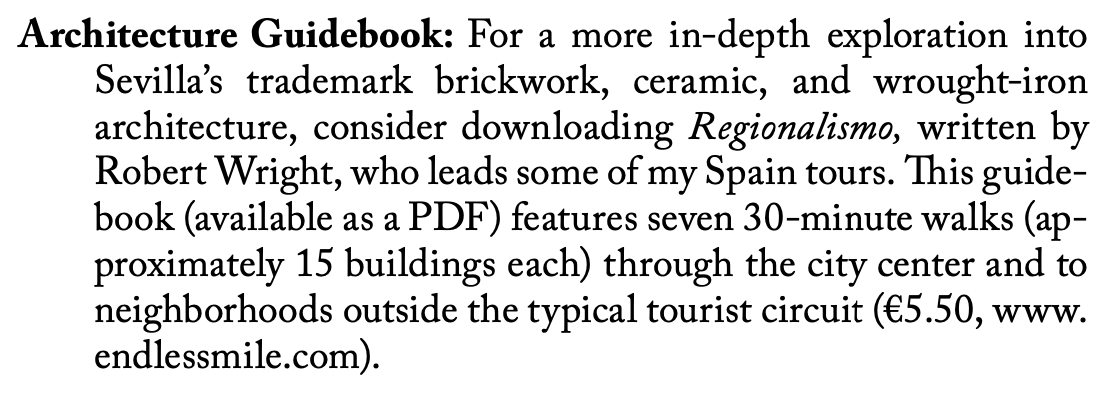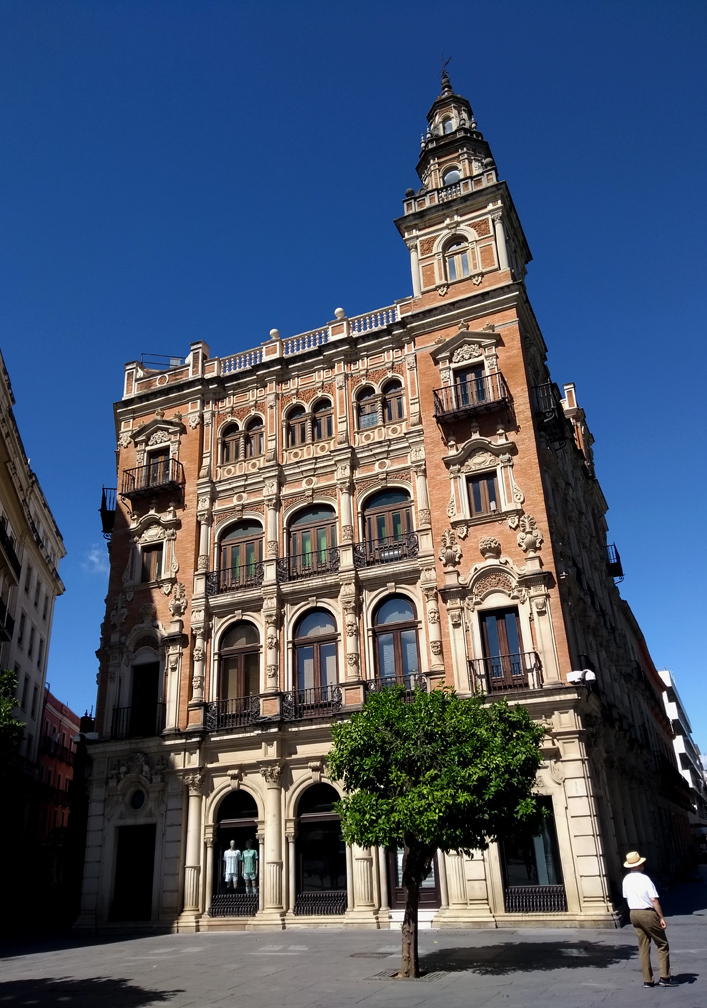
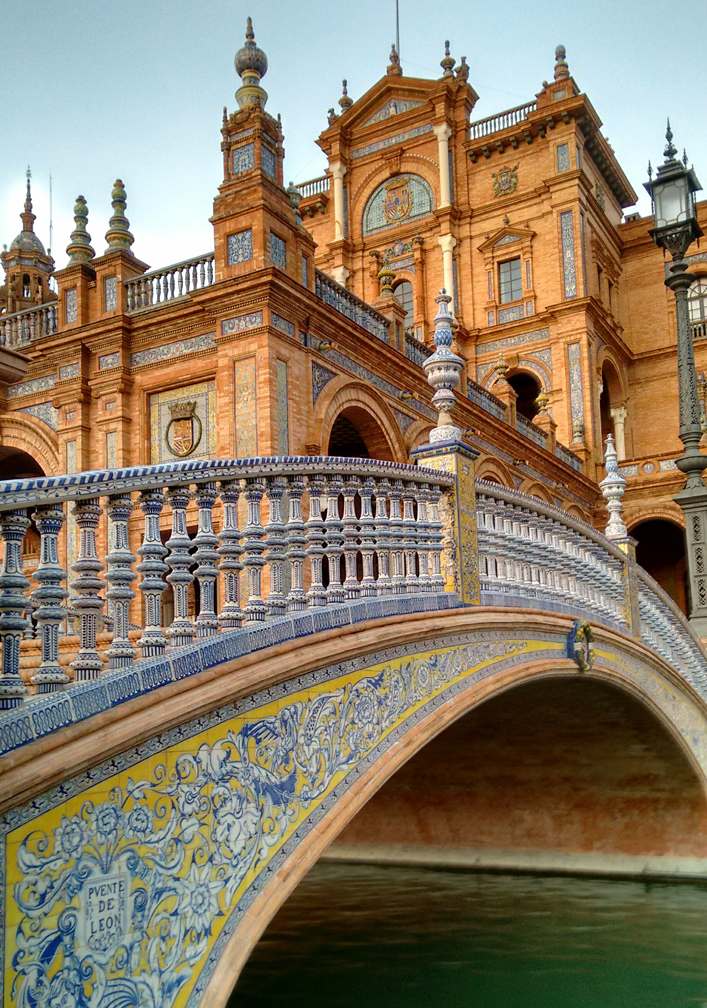
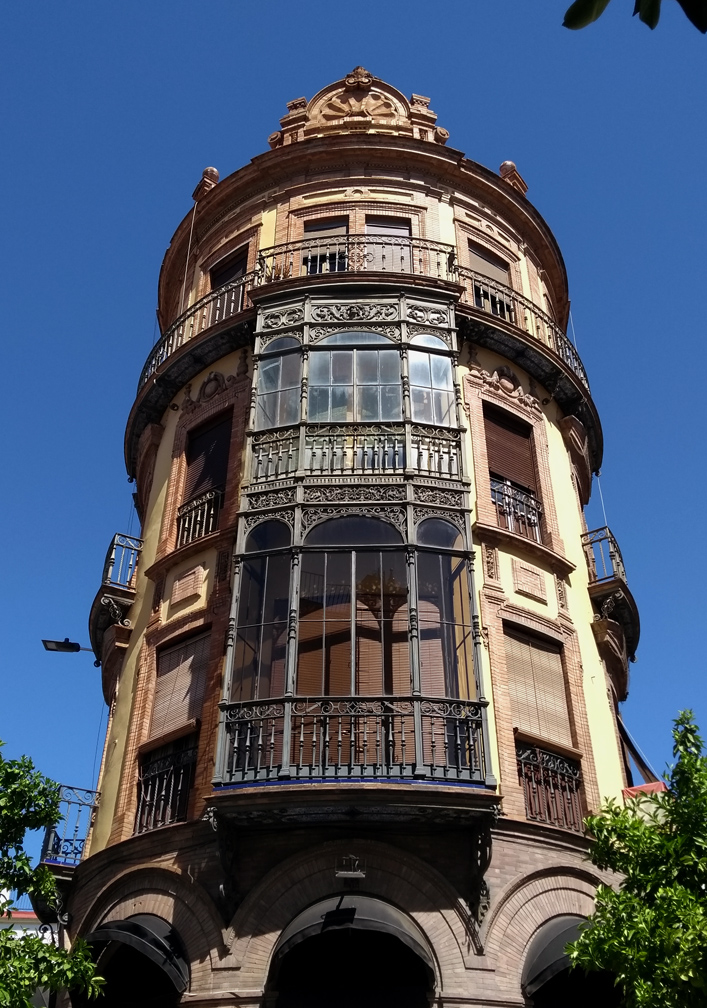
Literally hundreds of buildings from this architectural trend of the early 20th century still stand tall in Sevilla. So many survive that the city has become inseparable from the style’s trademark brick work, ceramic tiles & wrought-iron decoration. With this guidebook, get to know the architects of the era, who hired them & what made Sevilla’s version of Regionalism so unique.
●
●
●
●
Identity crisis
Spain had to manage a series of internal & external problems at the end of the 1800s… they hardly greeted the new century with optimism. Defeated by the USA in the 1898 Spanish-American War, academics thought introspection held the key to survival; turning inward & examining the past would lead the way to the future. With that goal in mind, architects merged the designs of Spain’s previous golden eras to invent a unique style based on regional examples: Regionalism.
Sevilla in particular loved this new mix of Mudéjar, Renaissance & Baroque… especially since the city languished behind the rest of Spain. Plans for a fancy world exposition drove a building boom & made huge improvements in the lives of many. Popular from roughly 1900 until 1930, the majority of buildings in Sevilla adopted Regionalismo wholeheartedly. Neither Art Nouveau nor Art Deco had much of a following in the south, which makes Sevilla all the more unique.
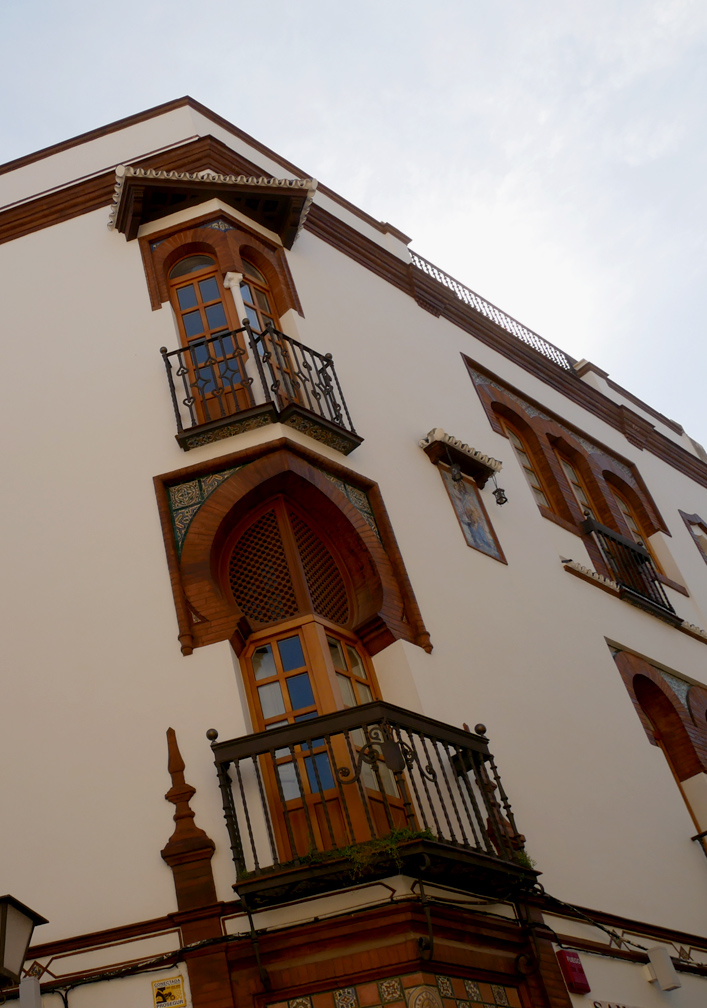
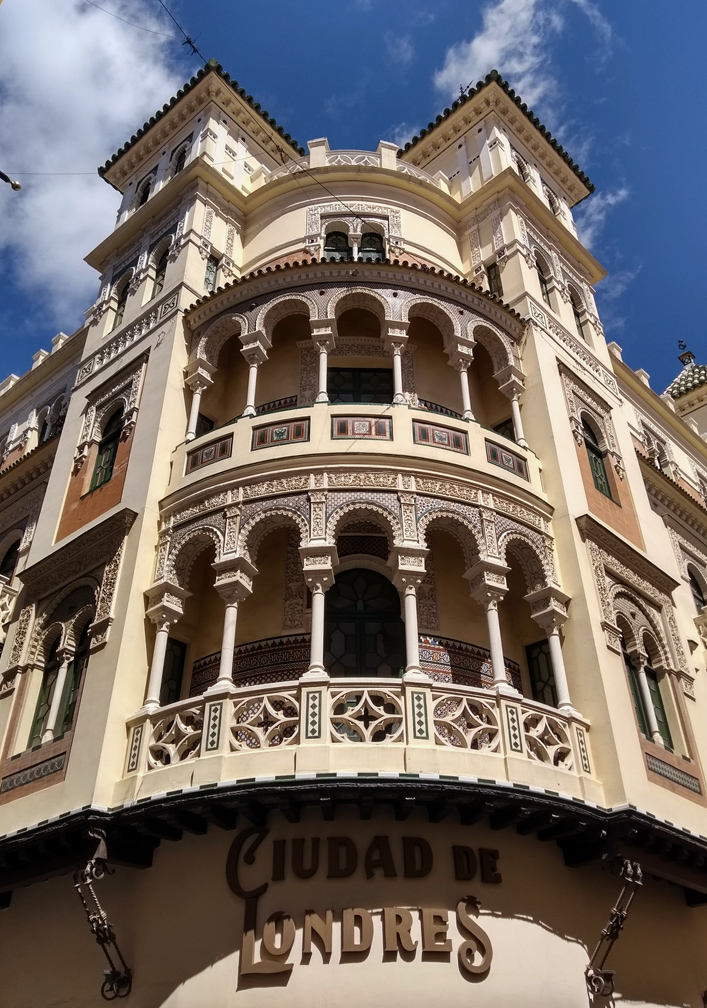
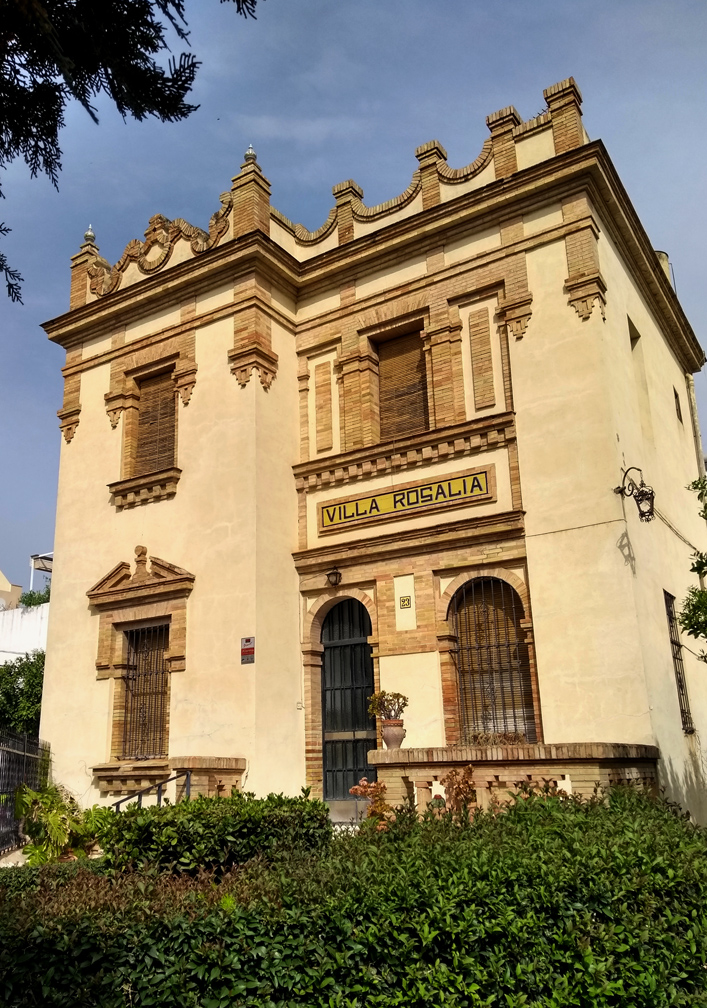
●
●
●
●
Focus on architects
Unfamiliar with architects from Sevilla? No problem. Since local practitioners have yet to find worldwide fame like Antoni Gaudí, this guide contains mini-biographies of Simón Barrís, Aníbal González, Juan Talavera, José Espiau & the Gómez Millán brothers. Their personal histories & interactions had an enormous influence on Sevilla’s development. Without their collective vision, Sevilla might have never emerged from its long period of decline & decay.
Over 100 buildings & monuments may seem like a large number to list, but many are grouped in or near the city center. We’ve also made it easy by organizing this guide into seven short walks of approximately 15 buildings each; do as many as you like. Also, keep this guide handy while exploring the city & incorporate a bit of architectural sightseeing wherever you stroll.
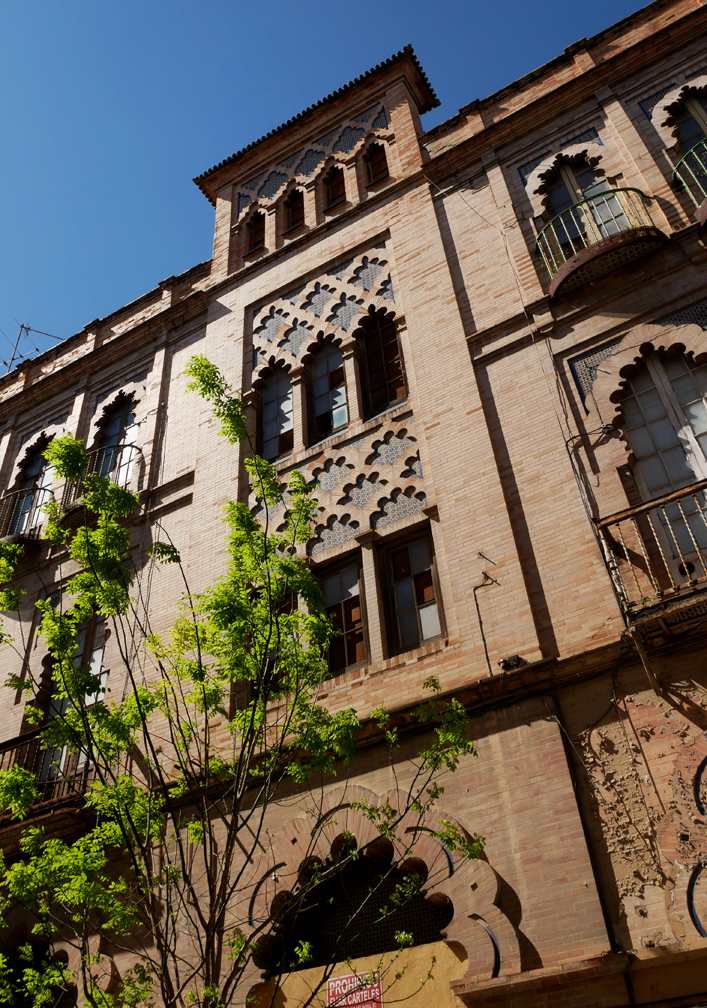
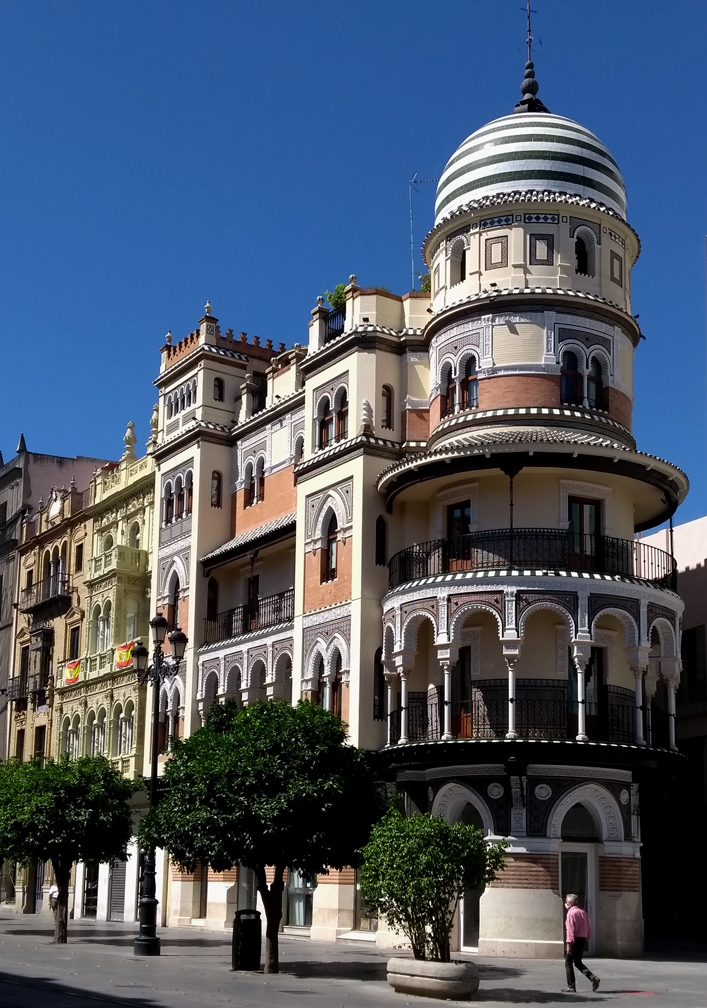
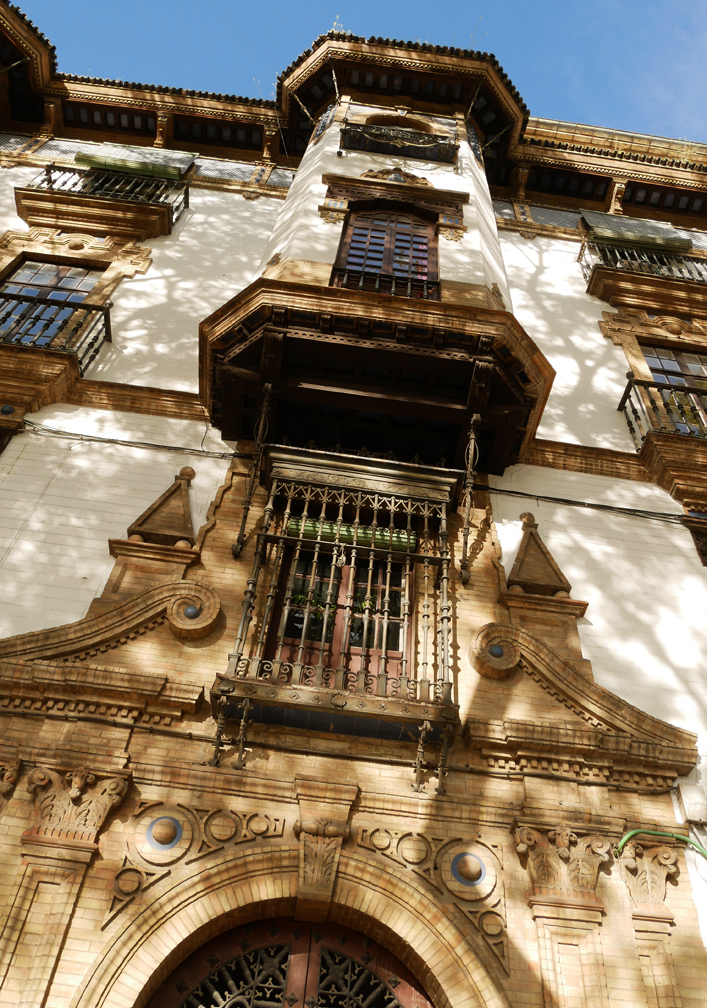
●
●
●
●
Unique content
Each listing includes the building’s name or original owner, its exact address plus the architect & year completed. All entries also have a photo for ease of recognition, plus additional text to explain its importance. Two walks cover areas of the city not often visited by tourists —El Porvenir & Nervión— which allows you to break away from the crowds & connect your own dots.
Design has been optimized for handheld devices: tablets of all sizes & even cell phones. Our crisp & clean look is easy to use as seen in the screen captures below.
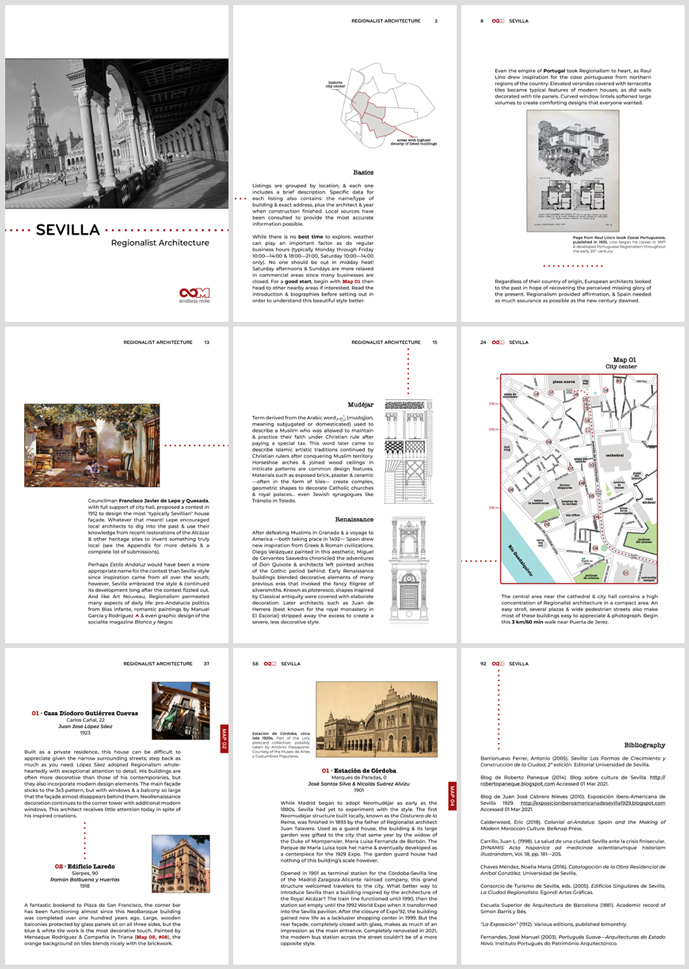
- Format: PDF, A5 portrait, 94 pages (file size 14.3 Mb). Designed for digital viewing. Released Jan 2022, updated Jan 2025. This guide may not be redistributed or resold.
- Duration: Each of the seven walks included take under an hour to complete. Reading the history section before setting out is highly recommended.
- Price: US $5.99 via PayPal (taxes included). Select “return to merchant” to download the PDF file after payment is confirmed. A thank-you email will also be sent with our contact information if you need assistance.
●
●
●
Recommended by
Rick Steves! Making an appearance in the latest edition of his Spain guidebook, published in July 2024:
●
●
●
●
Unsure if this guide is for you?
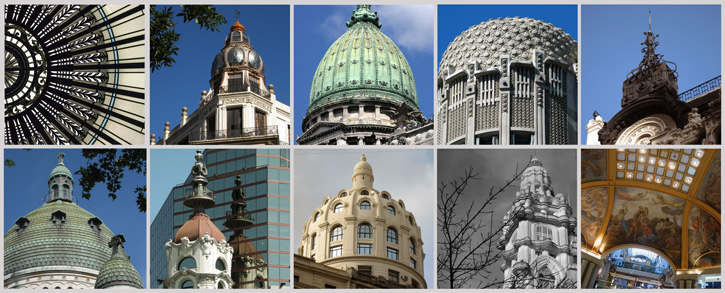
We’ve made our guide to Domes of Buenos Aires available free of charge. Although you’ll be visiting Sevilla, this 30-page, map-based PDF (file size 3.6 Mb) allows you to examine the general structure, layout & writing style of all Endless Mile guides. Take a look!
